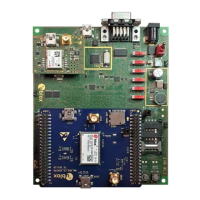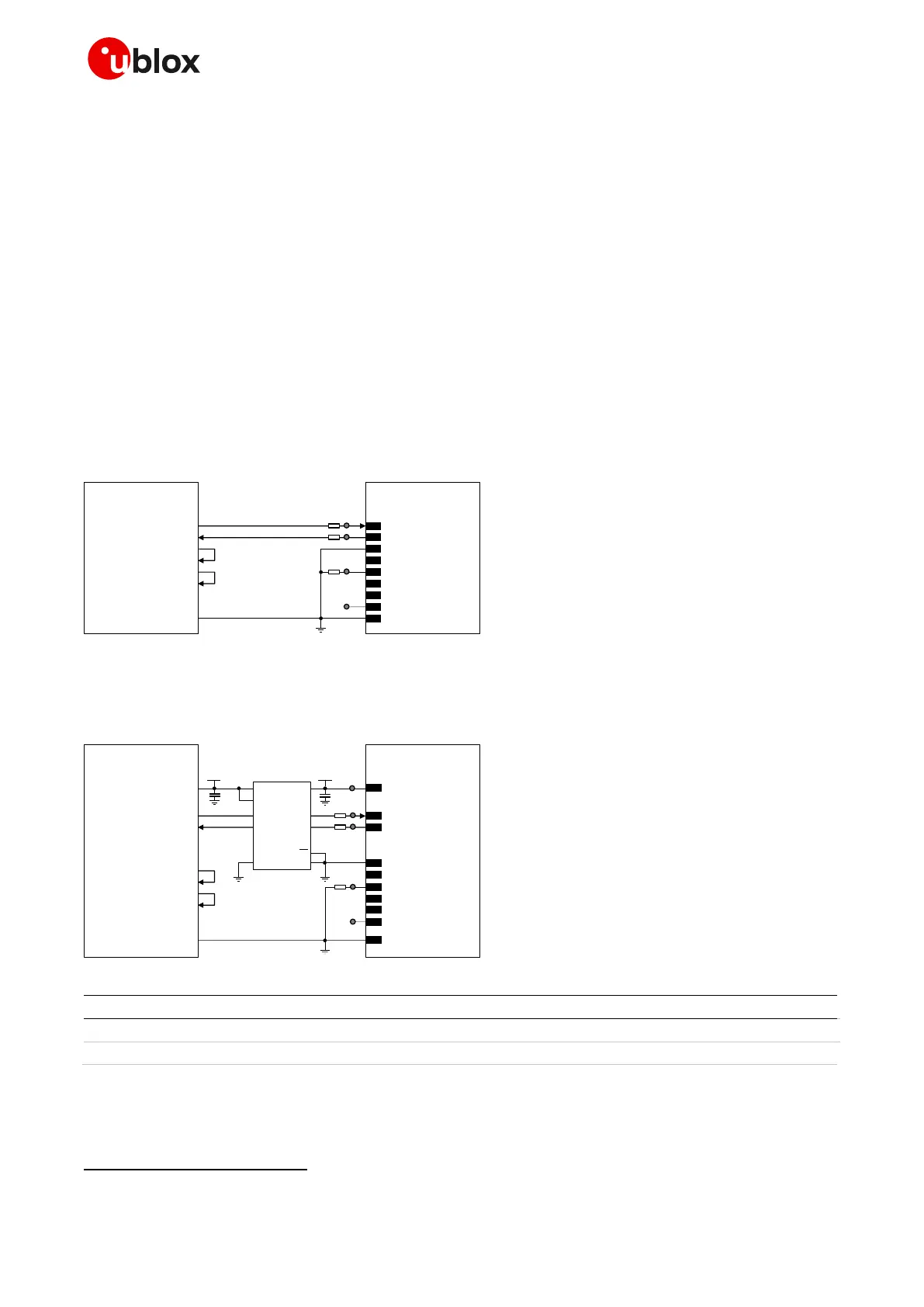SARA-R5 series - System integration manual
UBX-19041356 - R04 Design-in Page 85 of 118
C1-Public
Providing 1 UART with the TXD and RXD lines only
☞ Compatible with USIO variants 0/1/3; not compatible with USIO variants 2/4 (see section 1.9.1.1).
☞ Providing the TXD and RXD lines only is not recommended if the multiplexer functionality is used
in the application: providing also at least the HW flow control (RTS and CTS lines) is recommended,
and it is in particular necessary if the low power mode is enabled by +UPSV AT command.
If the functionality of the RTS, CTS, DTR, DSR, RI and DCD lines is not required in the application, or
the lines are not available, then:
• Connect the module RTS input line to GND or to the CTS output of the module, since the module
requires RTS active (low electrical level) if HW flow control is enabled (as it is by default)
• Connect the DTR input to GND, as useful to have the greeting text presented over the UART
• Leave DSR, RI and DCD lines of the module floating
If RS-232 compatible signal levels are needed, the Maxim MAX13236E voltage level translator can be
used. This chip translates voltage levels from 1.8 V (module side) to the RS-232 standard.
If a 1.8 V application processor (DTE) is used, the circuit should be implemented as in Figure 62.
Figure 62: 1 UART interface application circuit with 3-wire link in DTE/DCE serial communication (1.8 V DTE)
If a 3.0 V application processor (DTE) is used, then it is recommended to connect the 1.8 V UART
interface of the module (DCE) by means of an appropriate unidirectional voltage translator using the
module V_INT output as 1.8 V supply for the voltage translator on the module side, as in Figure 63.
Table 40: Components for 1 UART application circuit with 3-wire link in DTE/DCE serial communication (3.0 V DTE)
☞ Provide accessible test points directly connected to TXD and RXD pins for FW update purpose and
to DCD and DTR pins for diagnostic purpose.

